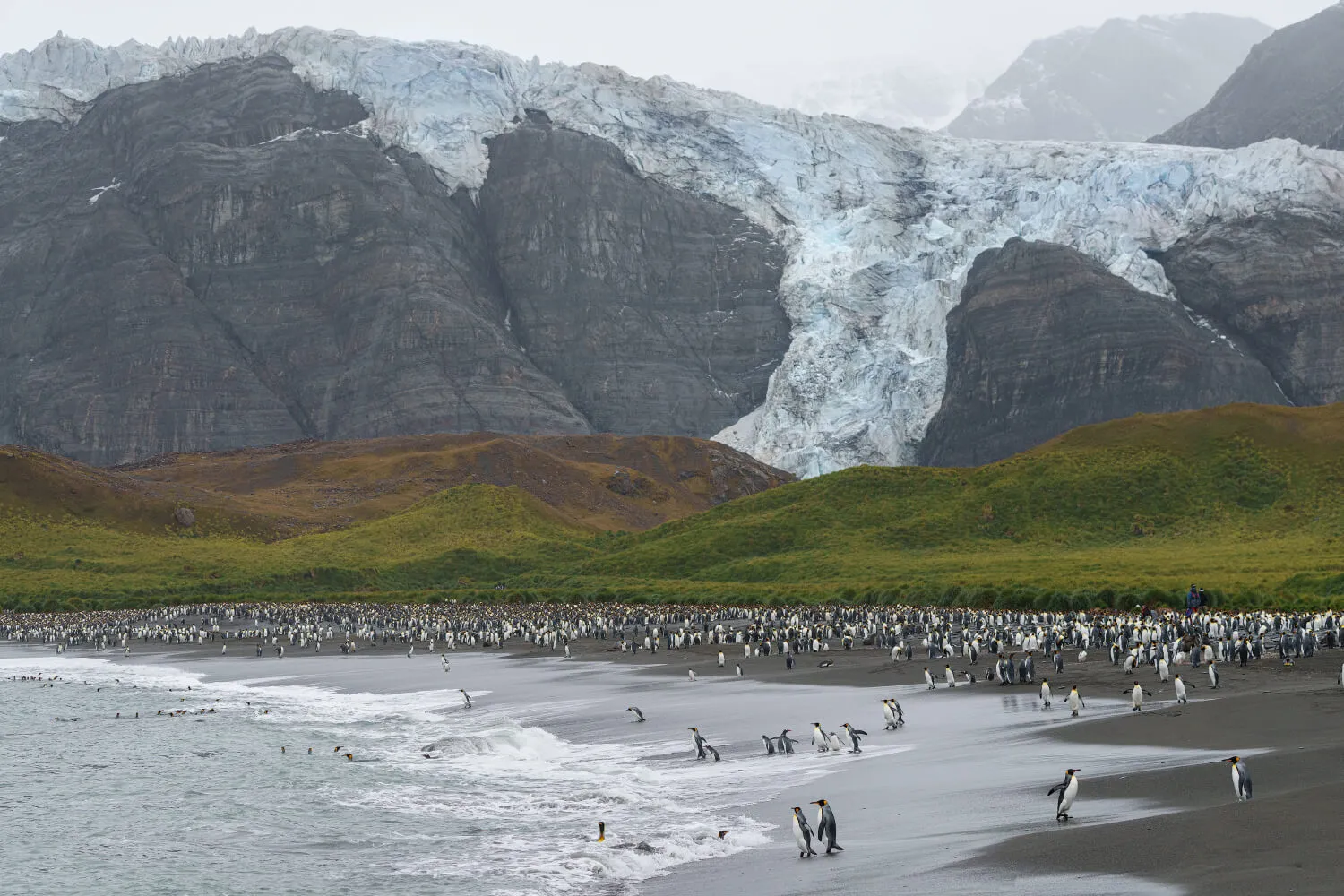

To get an idea of what seeing Penguins in Antarctica could be like, we sat down with our expert polar guide, biologist, and nature photographer, Jean Paul de la Harpe. We asked him to tell us about some of his favorite encounters with penguins in Antarctica.

Penguins in Antarctica are one of the first things that come to mind when you think of traveling to the 7th Continent, but encountering these flightless birds is one of the most memorable experiences you can have. At Antarctica21 we always adhere to the International Association of Antarctica Tour Operators (IAATO) wildlife viewing guidelines, which ensure travelers now and tomorrow will be able to enjoy moments with penguins.There are seven species of penguins in Antarctica. These include the following: Emperor, Adelie, Gentoo, Chinstrap, Macaroni, and Rockhopper penguins. In the sub-Antarctic, you can also find the Magellanic and King penguins. Although spotting the Emperor penguin on an air-cruise in the Antarctica Peninsula is uncommon, due to the fact they live in the interior of the Continent, you have the chance to see the other penguin species in both Antarctica and sub-Antarctic.Here are some of my favorite moments with penguins in Antarctica:
- Eye to Eye EncountersOn a landing on Danco Island, while waiting for the zodiacs to arrive with the travelers, I observed this Gentoo penguin (Pygoscelis papua) coming decidedly towards me. At that moment, I leaned back on the stones along the shore to interfere as little as possible with him and get a more personal point of view. The penguin paused for an instant, and we exchanged glances, achieving a singular connection. After that, the penguin continued walking, passing a few meters from me, to finally dive into the sea. Those are unique moments that you can treasure, not only in a photograph but also in memories.

Penguins Can Fly
Passing through the Lemaire Channel aboard the Magellan Explorer, we approached a large iceberg where this lonely Adelie penguin (Pygoscelis adeliae) was sitting. Which, when seeing us closer, preferred to launch itself in direct flight towards the sea. He took one last look at us, then dove, completely disappearing from our sight.

Elegance on the Ice
Elegance is perhaps an accurate adjective to describe the beautiful Adelie penguin (Pygoscelis adeliae). This species is the smallest of the Antarctic penguins, and together with the Emperor penguin, it is considered the exclusive resident of Antarctica. Their diet is based on Krill, like the other species that we find on the White Continent. Adelie penguins live on or near sea ice but only nest on ice-free land which makes up only 1% of the total area of Antarctica.

A Summary of Antarctica
This photo is a good idea of what Antarctica is: glaciers, icebergs, sea, and of course penguins, many penguins. With the ever-changing extreme weather, penguins are probably one of the few things that are guaranteed on a trip to the White Continent. The rest of the trip is always an adventure.

Unique Sightings: Antarctic Moai
On Half Moon Island, there is a colony of Chinstrap penguins (Pygoscelis antarcticus), which is distributed irregularly in the territory and is particularly interesting. But, probably one of the most beautiful views is made up of this large rock in the shape of Moai, at whose feet we find a group of nesting penguins. This exceptional monolith seems to be the great guardian of the Island.

Nesting Penguins in Antarctica
Probably one of the most beautiful things to see in Antarctica is penguins nesting. It is the only time they go ashore, once a year; the rest of the time, they live in the sea. They build a nest composed mainly of small stones, creating an embankment where they lay 1 to 2 eggs. In general, these nests are far from the sea, even on top of hills, for which they must take a long walk every day to go in search of food for their young. Both parents take turns in parental care, either bringing food or defending their young from attacks by their main predators, such as Skuas and Petrels. In this photo, we see a Papua penguin (Pygoscelis papua) nest with two young.

To learn more about our expeditions, Penguins in Antarctica, and other wildlife encounters, follow us on Instagram, where we regularly interview our expert guides about their knowledge of Antarctica. To learn more about Jean Paul and his photography, you can visit his Instagram to learn more and view his nature photography.
Birdwatching Guidelines
During an Antarctic expedition, on land or sea, you may find incredible concentrations of birds. Here are some guidelines to take into consideration when encountering these migratory and home-based birds during your trip.
- Walk slowly or simply sit and watch the animals.
- Avoid blocking ‘walkways’ in colonies and water entry and exit points. If parent birds are blocked from returning to their nests, increased predation of eggs and chicks by skuas and gulls may occur. In addition, parent birds will waste precious energy by avoiding human obstacles on their way to their nests or being displaced from the shortest access route.
- Take care in tussock grass where birds may be nesting, including in burrows under bare earth.
- Under no circumstances should ‘chumming’ (depositing fish guts or oil) occur to attract birds. Never feed wild birds.
- Later in the season, inquisitive chicks may approach closer than the recommended distance, it is important that the bird is in control of any interaction at all times.
Following these and the other recommended guidelines ensures a great experience for everyone, including the wildlife. Read the full IAATO Birdwatching Guidelines here.(Photos by Jean Paul de la Harpe)
Start planning your next big adventure today! Review our limited-time promotions.
Related Articles
Experience the Extraordinary
From dramatic landscapes to close wildlife encounters, every journey to the White Continent is unique. Let's start planning yours together.











.avif)
_INT0328.avif)




